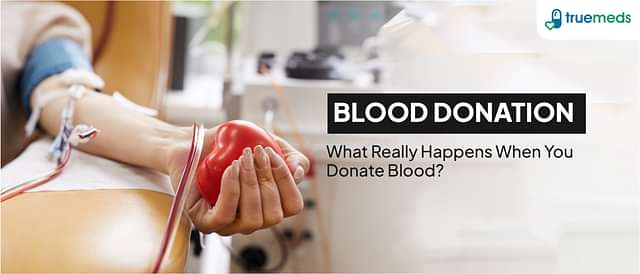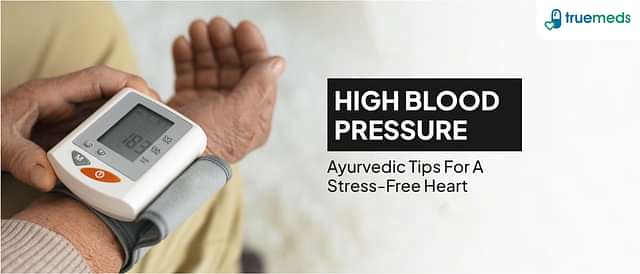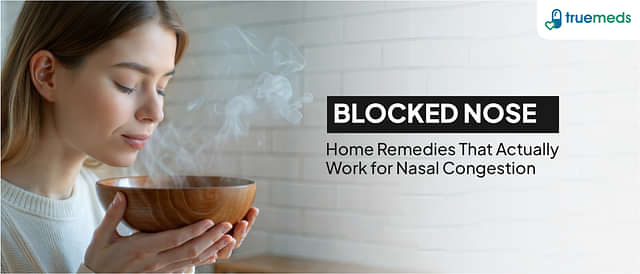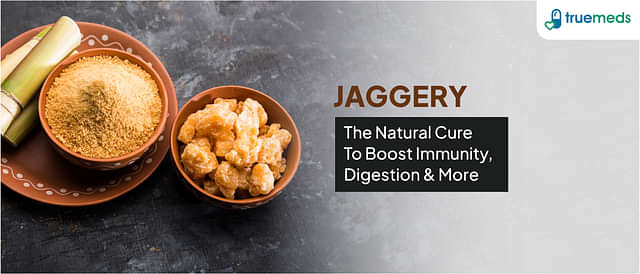Bruises: Symptoms, Causes, Diagnosis, Treatment
Last updated on : 12 Mar, 2025
Read time : 9 min
Bruises occur when small blood vessels under the skin break due to an impact or injury, leading to skin discoloration. Symptoms include pain, swelling, and color changes from red to purple, blue, or yellow as the bruise heals. Causes range from minor bumps to underlying medical conditions affecting blood clotting. Diagnosis is usually based on appearance, while treatment includes rest, ice application, and over-the-counter pain relievers to reduce swelling.
What is a Bruise?
A bruise, or contusion, is a discoloured patch on the skin caused by damaged blood vessels leaking beneath the surface. This results in shades of black, blue, purple, brown, or yellow as the bruise heals. Bruises can occur at any age due to minor injuries or medical conditions. While most heal on their own, understanding treatment options can help determine if medical attention is necessary.
What Types of Bruises are There?
The medical name for the blue mark on the skin is ecchymosis, which your doctor may use (ech-e-moe-sis). An injury known as a concussion is a bruise.
1. Hematoma
Injuries, such as a vehicle accident or a big fall, can result in bleeding and damage to the skin and tissues. When blood pools outside of the blood arteries, it causes pain and swelling.
2. Purpura
This type develops when there is a small amount of bleeding beneath the bruised skin.
3. Petechiae
Tiny crimson spots on the skin that don’t become white when gently pressed are known as Petechiae.
4. Senile Purpura
Skin gets thinner, dryer, and more prone to tearing as we age, resulting in senile purpura. Your skin is also more prone to bruising. Senile purpura is the medical term for this disorder.
5. Black Eye
Blows to the head can result in the formation of a black eye (or two black eyes). An accumulation of blood and fluids can be seen directly under the eye. Swelling and a bruise-like ring of discolouration formed around the eye as a result of this disorder. A facial fracture or bleeding in the eye (hyphema) can be signs of a more serious eye injury than a simple black eye.
Symptoms of Bruise
Bruises can have a wide range of symptoms depending on their cause. Bruises, or contusions, typically cause skin discoloration, tenderness, swelling, and pain. Symptoms vary based on injury severity, with deeper bruises leading to more pronounced pain and longer healing times. Common symptoms of a bruise include:
- red
- green
- purple
- brown
- As the bruising on the legs heal, the colour turns yellowish.
Pain and soreness may also accompany a blue mark on the skin. As the bruised hand heals, these symptoms tend to go away. Learn more about the many stages of a bruise’s healing process.
Severe Symptoms of a Bruise
Other signs point to a more serious problem if you are experiencing bruises on your legs for no reason. If you’re having any of the following symptoms, you should see your doctor:
- Aspirin or other blood thinners may cause more bruising.
- The bruised hand is swollen and painful.
- forceful falls or blows might cause bruising.
- associated bruising with a suspected fracture
- bruising without a cause
- The four-week-old bruising on legs that has not healed
- a swollen area under your fingernails
- mouth, nose, or gum bleeding in addition to bruising on legs
- bleeding in the urine, stool, or eyes as a result of bruising
Also, if you’re experiencing any of the following symptoms:
- repeated bruising, especially if there is no obvious cause
- bruises that don’t hurt
- no-injury bruises that emerge in the same place over and over again
- The bruised face that is dark in colour
Varicose veins can cause blue bruising on the legs, but a blood clot in the deep veins of your legs can cause a black blue mark on the skin. Life-threatening consequences can result from this.
Causes of a Bruise
Bruises occur when blood vessels break, allowing blood to collect under the skin without an external wound. This can happen due to injuries, falls, surgeries, or certain medical conditions. Aging, medications, and vitamin deficiencies can also weaken blood vessels, increasing bruising risk.
Your blood vessels may seep blood under your skin for a few reasons:
- Bruising caused by an accident
- Everyday injuries and more acute trauma can induce bruising.
- A strike to the face,
- Domestic or child abuse
- Falling
- An accident involving a vehicle.
- Severe injuries while participating in a sport
Bruising as a result of characteristics such as age, gender, and way of life
- wrinkling and deterioration of the bruised skin
- Alcoholism is a major problem in the United (decreases blood clotting)
- The female sex (women bruise more easily than men)
Bumps and bruises caused by major medical conditions
It’s possible to have an unexplained blue mark on the skin and purpura from a wide range of diseases, ailments, and situations. When capillaries spontaneously bleed blood, it results in purple or red flat spots or patches on the bruised skin or mucous membranes.
Unknown bruising or purpura can be caused by a variety of factors, including:
- Aplastic anaemia
- Lupus and rheumatoid arthritis are two examples of autoimmune disorders.
- Meningitis, mononucleosis, and measles are examples of infectious disorders.
- Idiopathic steroids
- Haemophilia (inherited bleeding disorder)
- Bites by insects
- Leukaemia
- Organ failure
Make an appointment with your child’s doctor if they have unexplained bruising. A child’s unexplained bruising on the legs could indicate a serious disease or possible abuse.
A higher risk of bruised hands is associated with the use of certain drugs. Blood thinners and corticosteroids are two examples where this is particularly true. Fish oil, for example, has blood-thinning properties similar to those of herbal supplements, which can result in bruising. After receiving an injection or wearing tight clothing, you may experience bruising on your legs.
Bruises Diagnosis
Assuming the injury is obvious and there are no signs of fractured bones, the doctor will most likely not order any testing for bruise treatment.
- If there is significant swelling or pain, the doctor may order an X-ray to rule out fractures.
- A doctor may prescribe a blood test to rule out a bleeding disease if you experience frequent and unexplained bruising on your legs.
- A doctor may suspect physical abuse if they see a certain bruised hand or a pattern of injuries that appear to have developed over time and at various stages of healing.
Bruises Treatment
Without bruise treatment, most of it disappears within two weeks. A month or more may pass if the bruising and hematomas are severe. Following these measures will help you recover faster:
- An ice pack might help alleviate any oedema that has occurred. Protect your bruised skin from the pack by wrapping it in a handkerchief. For 15 minutes, apply ice to the bruising on the legs. If necessary, repeat this process every hour.
- Rest the injured area.
- Keep blood from pooling in the injured area by elevating it above your heart, if possible.
- Take acetaminophen (Tylenol) for bruise treatment, an over-the-counter pain reliever, to ease the discomfort. Ibuprofen and aspirin can raise the risk of blood clots.
- Protect your arms and legs by wearing long-sleeved clothing and leggings.
Bruises Prevention
Along with the various bruise treatments, keep the following things in mind:
- While playing contact sports like soccer, wear protective gear like shin guards to avoid getting a bruised face.
- Keep furniture out of the way of walkways and doorways in your house.
- To avoid tripping over the phone and electrical cords, keep them out of reach of open places.
- Make sure the floors are dry and the rugs are non-slip.
- Avoid putting things on the floor.
- Use a flashlight or a nightlight to get to the bathroom in the dark if necessary.
- Regular monitoring and adjustments to your blood-thinning medications are essential if your doctor has prescribed them.
For the all latest coupons and offers on the medicines, follow us on Instagram and Facebook.
Frequently Asked Questions (FAQs)
To heal a bruise quickly, apply a cold compress within the first 24 hours to reduce swelling. Elevating the affected area, gently massaging it after 48 hours, and using arnica or vitamin K creams can also speed up healing.
A bruise, or contusion, is a skin discoloration caused by blood leaking from damaged blood vessels beneath the skin. It usually appears after an injury and changes color as it heals.
You should seek medical attention if bruises appear without injury, are unusually large or painful, do not heal within two weeks, or are accompanied by excessive bleeding, swelling, or other unexplained symptoms.
Common symptoms of a bruise include skin discoloration (black, blue, purple, or yellow), tenderness, mild swelling, and slight pain in the affected area. The intensity of these symptoms depends on the severity of the injury.
Bruises typically last between one to two weeks, gradually changing colors as they heal. Severe bruises may take longer, depending on the extent of blood vessel damage and individual healing rates.
Bruising is usually harmless and a normal response to injury. However, frequent, unexplained, or severe bruising may indicate an underlying health issue, such as a blood disorder or vitamin deficiency.
Bruising is mainly caused by trauma or injury, leading to blood vessel damage under the skin. Other causes include aging, blood-thinning medications, vitamin deficiencies, or medical conditions affecting blood clotting.
Disclaimer
Our healthcare experts have carefully reviewed and compiled the information presented here to ensure accuracy and trustworthiness. It is important to note that this information serves as a general overview of the topic and is for informational purposes only. It is not intended to diagnose, prevent, or cure any health problem. This page does not establish a doctor-patient relationship, nor does it replace the advice or consultation of a registered medical practitioner. We recommend seeking guidance from your registered medical practitioner for any questions or concerns regarding your medical condition.
Popular Articles
Recommended Articles
Recent Articles
Top-Selling Medicines:
...View more
Top-Selling OTC:
...View more
Subscribe
Registered Office Address
Grievance Officer
Download Truemeds

Contact Us
Our customer representative team is available 7 days a week from 9 am - 9 pm.
v3.7.0
Our Payment Partners



























































